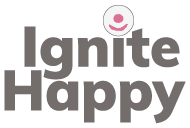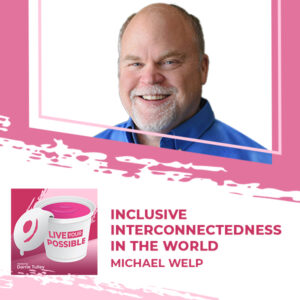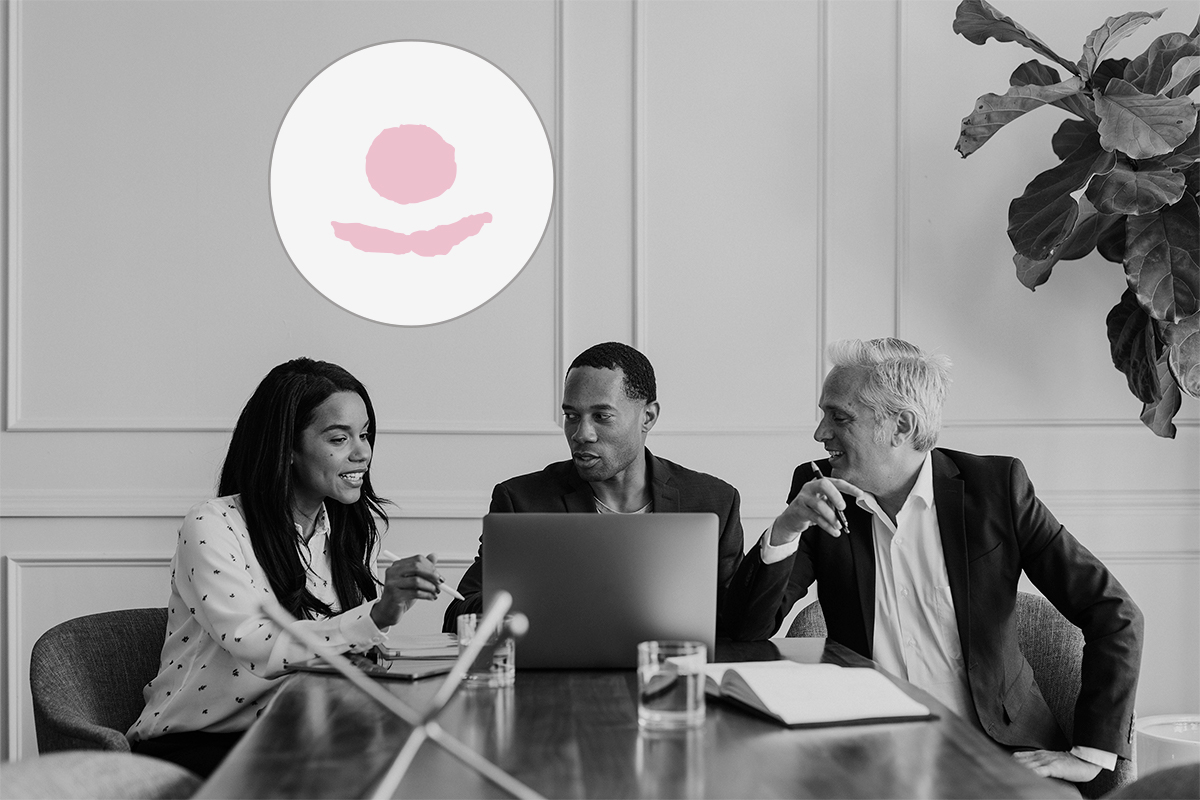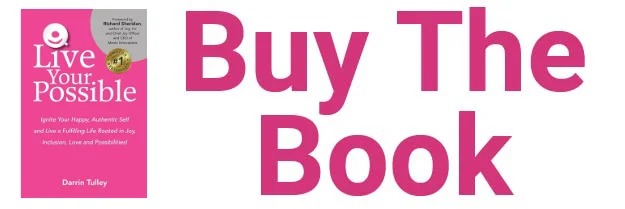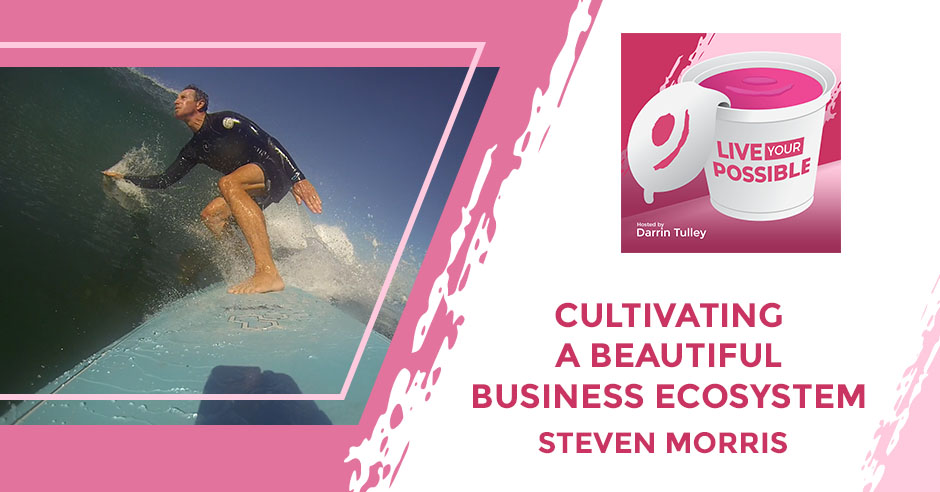
Dive into a world where business meets artistry and humanity. Join this episode as Darrin Tulley chats with Steven Morris, a culture-building expert, author, and life seeker who has transformed over 275 brands, including Google and Disney. Steven’s unique approach weaves together brand, culture, and business strategy, creating a framework for success that’s as beautiful as it is effective. Discover how to create a business that not only thrives financially but also nourishes the human spirit. Hear about his upcoming book, his passion for fine art painting, and how surfing and beekeeping infuse his work with creativity and empathy. Plus, explore his insights on leadership, managing stress, and fostering true belonging within organizations. This conversation is a must-listen for anyone looking to harmonize their business and life.
—
Watch the episode here
Listen to the podcast here
Cultivating A Beautiful Business Ecosystem With Steven Morris
This show is a call to awaken to a world of possibilities with Steven Morris. He’s an ever-curious life seeker, brand and culture-building expert, and author of The Beautiful Business. With nearly 30 years of entrepreneurial experience, he has served as a trusted advisor to over 3,500 business leaders and evolved more than 275 brands and cultures, including Google, Habitat for Humanity, Samsung, and Disney.
His best-selling book, The Beautiful Business, and his wildly read insights blog are a testament to his consulting expertise in creating unignorable magnetic and sustainable companies. His diverse interests, including meditation, fine art, painting, surfing, and beekeeping, infuse his work with creativity, soul, and a deep understanding of the human experience. We did some deep noticing within ourselves and how we can all contribute in harmonious and magnifying ways. Dive in deep with us and live your possible.
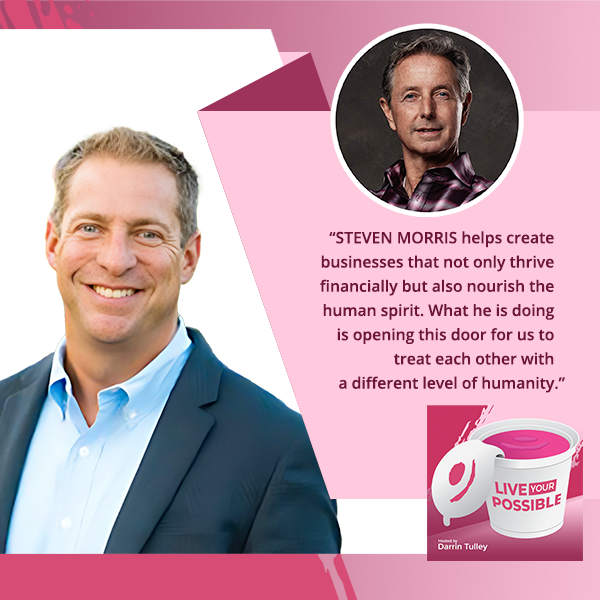
Steven Morris, welcome to the show. It’s so wonderful to see you again. How are you doing?
I am doing awesome. I am so glad to be here and diving into this with you. Thanks for asking. Thanks for hosting this. I’m excited to see where we go.
I’m excited, too. We could go so many different paths. I’m not even sure where we’re going to go. That’s so exciting. Tell me a little bit about what’s going on with you and what you’re most passionate about.
On the personal side of things, there are two big things. One of which is I’m most passionate about helping my mom go through some health issues that she’s having. I’m on a flight back and forth to the East Coast fairly frequently to care for her. As I mentioned before we hit record, I’m having lunch with my son. We have a monthly lunch. He and I are hanging out together.
On the work front, which is probably what we’re here to talk about, I’m very passionate about the work that I get to do with a wide variety of organizations, and that is living in the intersection of brand culture and business strategy. I’ve been blessed to work with some wonderful organizations over the last many years. I’ve got a new book, which I’m thinking through. I’m not ready to talk about that. I’m really passionate about that, but I can’t talk about it yet.
That’s exciting. Are we thinking about a release date later this 2024 or is that in 2025, your new book?
It will be at least in 2025. I’m in the early stages of thinking through exactly what it’s all about. I’ve got a couple of different working titles, working themes, or theses. I’m working with my agent to define which one is the right path for publishing and how that whole world goes.
That’ll be your second book, right?
It would be my second published book. My first book was self-published. The first one was The Beautiful Business.
We’ll dive into that in a little bit, too, in a little bit more detail. You’re an author and you mentioned at a high level what you do. Do you mind going to the next level about some of the things that you are doing?
House With Three Doors
Yes. The best way to describe the work that I do is if you can imagine a house with three doors. That house is a metaphor for any business that I work with or any business that exists in this plant in this day and age. There’s no exact sequence to these doors, but I can’t say them all at the same time so I’ll say door number one is what we call the brand door.
The brand door really explores the question. When a company comes to me and says, “We’ve got a public awareness issue. We’ve got a market issue. We’re trying to attract more of the right customers,” and things like that, that is the brand door. Sometimes, we get into what the brand means to them and we’re refreshing and evolving the brand. Door number one is when they come into the brand door.
Door number two is what we call the culture door, which is the world, people, collaboration, integration, and how the work gets done within the workplace. Typically, an organization will raise its hand and say, “We’ve got a people problem within our team.” Either there are silos, back channeling, low productivity, low engagement, and things like that, and so they invite me in through that door.
Door number three is what we call the business strategy door. The business strategy door really examines the questions of, “Where are we going as an organization? We’re in the state of potentially revisioning what we’re doing and where we’re headed.” Leaders within these teams want help with that particular process.
Unless they’ve read my stuff, most of them don’t realize that they all end up in the same house because the business strategy is connected to the brand and the culture. If a business strategy or a business wants to re-envision where they’re going, one of their first questions after they’ve defined where they’re going is, “How are we going to get there?”

The, “How are we going to get there?” is defined by the people within the organization, which says, “We got to involve the culture within this.” Typically, then, that process looks like a storytelling process to capture what that new strategy and/or vision is about, telling the team and creating the conditions that the team can succeed in driving that strategy forward or in whatever the definition of success looks like within that.
All of a sudden, you begin to ask the question once the team understands the story behind that strategy and we’re going to begin to implement that. We’ve created the conditions to implement that. We have to tell the outside world. It all of a sudden becomes a brand question, brand problem, or brand opportunity. It gets into the outside world of storytelling, market positioning, and even marketing. In my world, I see marketing as a subset of brand.
With the work that I do, organizations come to me and they’ll have one of those three problems. I meet them exactly where they are and help them suss out that initial problem. Typically, it’s going into the next two segments. Let’s say we begin with culture, strategy, or brand, and then we’re interweaving, connecting, or integrating those three elements together regardless of where they begin.
Mindset Work
That’s great. I appreciate that. You mentioned how you meet people where they are. As you think about certain leaders that you continue to work with or that you initially assess, is there a mindset that you look for with leaders or do you think a certain set of leaders that when they step into this work have more success?
Yes. There’s a mindset. The question of resistance comes to mind here. There are two things that I’ll talk about within this. One way I hear that question is, “What kind of resistance might I get for deploying this relatively complex set of work?” Honestly, I sit in a very fortunate position in that I’m fairly well-known in the spheres that I work in. Most of the time, the people who come to me have some sense of how I think, what I do, how I do it, and that triangulation effect.
I don’t have to convince people typically that these three things are interacting together and the benefit and value of that. The mindset of understanding that all business is a long game and there really aren’t “winners” in the world of business. The way that we win in the world of business is to stay in the game of business. I have an allergic reaction when I hear language that says, “We’re in it to win it,” and that kind of thing. I don’t even know what that means when it comes to business.
When we think about the winners in the game of business, they’re the ones that stay in it and stay in it for their own reasons. They thrive based on their own value system, their own beliefs, and their own ways of doing things. They stay profitable. They care for their people internally and externally in the long game of the business.
The mindset of understanding is a really important mindset when it comes to deploying this work because if we think about it from a long-term standpoint rather than trying to get short-term wins, then all of a sudden, people can make the investment or business leaders can make the investment into not just their strategy but more importantly, they’re people. By the people, I mean both the internal cultural people or the partners and communities they work with and their customers. The mindset of that is important.
Also, a mindset of what I would consider leadership self-awareness is really important. That’s important because the way I see self-awareness is that there are 2 sides to it, 1 of which is the internal self-awareness which has to do with, “To what extent do I understand my own personal motivations and drivers in what I do and how I show up in the world?” The second part of the self-awareness is, “To what extent do I understand how I affect the world of the people that I’m interacting with as I move through the world through the value systems that I have?”
If they have a strong degree of self-awareness as a leadership team or as an individual leader, then they can work in concert with the beautiful people who are connected to the organization and do so in a sense of both reciprocity for those people and with those people and in deep collaboration where the best work happens. That’s the most creative work, most collaborative work, most ingenious work, and most productive work. Lots of studies and science to support them.
That self-awareness piece is critical to the mindset and to being open-minded to what’s there. I like how you go through those different doors because people have different strengths. They might see different viewpoints or maybe they have different perspectives or different values. When you show them that they’re all interconnected, it’s like, “That does lead to this,” or, “That does rely on this.” That ability to know where you have the strengths or you don’t is pretty cool.
You mentioned conditions a few times. Can you explain that a little bit? What do you mean by having the level of conditions set and in place for this work to take a life of its own?
It’s probably best to talk about this from a garden metaphor standpoint. Let’s say that your business is a garden, and whatever you’re growing in that garden, be it flowers, vegetables, fruit, or whatever, is the product of your business. Ideally, you want as abundant a product or crop as you possibly can within that garden. A great gardener knows that you have to tend to the soil and the conditions and nurture all the conditions that are both within and out of your control in order to get the end crop that you’re looking to harvest and even to have more crops in the future. Crop rotation and things like that. I won’t get into the science of gardening.
I think that creating the conditions is creating the soil and the atmosphere of the elements within the business so that everything can grow and grow at its right pace or its own pace. Ideally, the people, the place, and the environment are nurtured so that they care for everything within the business, including one another and themselves. The conditions include everything from top to bottom, but it’s mostly a human condition setting in order for that business to produce the fruit, crop, vegetables, or whatever that we’re trying to grow.
Conditions To Thrive
You’re creating that ecosystem for it to thrive, to take on that life, to be generative over time, and to work its magic. You talked about people extensively in our conversations. Here, the focus is on the fact that we have humans that are still driving a lot of this work. We have places of work that employ humans, and we lead humans. For us to get the best out of our people, these are the conditions that we need to set to drive.
I’m curious to know a little bit more. As a leader, how else can we create those conditions where people can thrive? I know you have a TEDx that talks about the beauty of business. Your book gets into that space, too. I’d love to know more about those conditions, maybe the pillars that you think about, or wherever you want to take this.
There are a lot of different ways to go into this. The conditions range drastically depending on what the organization is. If I scan the landscape of some of my clients, Google on one side and a local nonprofit on another, the conditions on each one of those two ends of the spectrum would be very different. There are some things that I would consider that would have to be common in place in order for those conditions to be even appropriate for whatever that organization is.
This happens to have a lot to do with the mindset of stewardship. The stewardship framework that I tend to think about has to do with what I call appetite, capacity, and skillset. It’s a framework that I’ve worked with in organizations to think about how we measure whether an individual, a team, or an entire organization can be effective in what they’re doing.
This element of appetite, capacity, and skillset has a lot to do with appetite first, which examines the question, “To what extent do we feel we have the passion, the hunger, the thirst, the drive, and the desire for the work at hand? How aligned are we for whatever that business is to the drivers of that business?” which might be their mission or their own purpose. Appetite examines the fire in the belly side of things.
Capacity is a resources question. It’s, “To what extent do we have the time, the energy, the space, and even the bandwidth to produce the work at hand? If we don’t have those things, where do we need to gain those things, especially if it’s time, money, and energy?” A lot of teams that you and I both work with are stretched fairly thin. It’s not uncommon to see a team that has faced layoffs, cutbacks, and things like that and more responsibility is being put on individual team members to do more work. This is a capacity question. At what point is the breaking point within an individual or within a team to produce at the quality of expectation that the company is expecting, the leadership is expecting, and even the customers are expecting? There’s a gauging system within that.
Skillset is the third pillar to this, which examines the question, “What are the skills that we need to have either on our team or bring into our team in order to produce the work at hand? Of the things that we don’t currently have from a skillset standpoint, what do we need training on? What do we need to improve upon? What do we need to bring in from a skill standpoint, either through consultants or training programs?” That could be anything from to your earlier question about mindset and/or leadership or management training, systems and processes or even how to deal with stress and anxiety.
One of the things that I’m working a lot on is the work of Peter Levine and Somatic Experiencing, which I’m trained in. You and I both see a lot of stress and anxiety in the workplace and sometimes even trauma with a lowercase T or a capital T. Somatic Experiencing is a methodology that can help people manage their own stress.
Before they manage it, they recognize when they’re in a stressful environment, recognize the bodily symptoms that show up within that, be able to pause long enough to notice what those bodily symptoms are and what they’re doing, and then equip them with some skills to work through that at the moment, whatever that moment is, or even after the fact.
Let’s say somebody’s in a meeting. They get called out for a mistake. Their anxiety shoots through the roof. Their heart is in their throat. They can’t think. The world is blurry. They go into shutdown. This work is around helping people be more equipped in that. This trilogy of frameworks of appetite, capacity, and skillset are some areas in which I work with organizations to create those conditions you’re asking about.
I love the tools and how you map that out for people. Even the example to help people take that pause, they get into a situation instead of reacting in a way they didn’t intend to or didn’t know they did, or it’s too late to pull it back. To your point, it’s slowing it down like, “Let’s take a look at this. Let’s assess it. Let’s see where we need to go next.” It’s slowing our brain down to get present and current. That’s what I’m hearing you say. You have the tools to help the leaders methodically go through this. You make it sound like this is doable.
Beautiful Business
It is. I suspect you know this from your work, too. We could have a whole conversation around the benefits of slowing down in order to speed up or in order to achieve more. Even in that process that you walked through, which is reflecting on that individual’s experience in that meeting, we’ve all been there. We’ve all made a mistake or we’ve all put our mouth in a meeting and done something that we’re like, “What happened? What’s happening to me in my body?”
Slow down in order to speed up and to achieve more. Share on XIt’s that process of slowing down long enough to, first and foremost, recognize the reality of the situation that we’re in. This is true for a collective, a team, an organization, a meeting, or even myself as an individual. I’m slowing down long enough to recognize the reality that I’m in and acknowledging that sometimes in this scenario to myself first like, “I’m stressed out. I am at my wit’s end,” or I went into that state of shutdown. If you have some training around Somatic Experiencing, you can understand when you’re shut down and then what to do with it. That also is a slowing down long enough process to work through the things and breathe through the things so that your prefrontal cortex comes back online.
What happens in that shutdown state is we go into our reptilian brain. A reptilian brain only knows how to fight, flight, freeze, or fawn. I won’t get into the science behind all those things, but we all know what fight is, what freeze is, and what flight is. When we’re in that state, the thinking mind, the strategic mind, or the rational mind, we no longer have access to it. When we slow down long enough to recognize, “My prefrontal cortex is shut down, what do I do now? I need to either breathe or notice my sensations and then work through that.” Sometimes, I have to do that in a public environment, and then we can work through that either as a team or as an individual.
Let’s say we’re in a meeting. Take that same scenario where I made a mistake on a project and my boss called me out. There are twelve people in that meeting. In that first scenario, I’m the only one equipped with SE and the only one that notices what’s going on in my body. Let’s say in that meeting, everyone is equipped with some tools and Somatic Experiencing and they notice that I went into shutdown.
All of a sudden, our empathetic nervous system kicks into place and I can recognize, let’s say, you’re my teammate in this meeting, “Darrin recognized that Steve’s in shutdown.” I then can feel your empathy once I get back online, and then the rest of the team can feel empathy for the state that I’m in. Maybe if it’s a really great environment, we’ve created the conditions for trust and collaboration. All of a sudden, I’m here to support you. I’ve got your back. It’s not the, “Throw the dude under the bus,” kind of thing. It’s, “We’re all in this together,” which is what a great team does, in my opinion.
I’m with you. It’s understanding and seeing what’s happening to other people or the triggers that we see in ourselves or we see in other people as a team. It shows a different level of care, interest, and trust that you’re willing to say, “I’m here for you. I see what happened there. I see how that landed there for you or how that landed for me.” Being able to talk about that out loud, could you imagine what a team could do? I know you like to word it liven. I’ve seen that in your books and some of your writing, which I love. That’s what it does to an organization. What do you think?
I imagine in your work, you see this frequently. When we think about what is a beautiful business, a beautiful business is an organization that is human first and foremost. The more humanity they put within the core of their business, the more they have each other’s back and the more they care for the people, not just internally, as we’re describing here from the teammate scenario, but the more we care for the customer.
You take that same scenario that we were talking about. Let’s say I’m an employee who works the health desk of some technology organization and we’ve created the conditions for care, concern, and even a beautiful business within it. I’m going to show up as that health desk employee with a greater amount of empathy for the person who’s complaining about my product. By definition of help desk, I’m supposed to help them.
When I have a strong degree of empathy in a scenario where the business has harmony and connection to it and cares for one another, I’m going to treat that customer with a greater deal of respect than if I’m going through a transactional-type arrangement. A beautiful business transcends the world of transactions and gets into transcendence. It cares for the people internally and externally. It thinks about the world that it lives in from more of an artistry perspective in that the view of the business then turns into an active ongoing creation, risk-taking, and an opportunity to move people, which I believe all artists and all businesses do.
In the business world, moving people is ideally moving them closer to your products or services and improving their lives in some way, shape, or form. In the artistic world, moving people makes them think differently, feel differently, or show up in their lives differently. The beautiful business takes the mindset that a business can be a harmonized, magnetic, and collaborative work of art that adds great beauty, purpose, benefit, and value to everyone involved within the organization, including the employees, the partners, the communities, and certainly the customers.
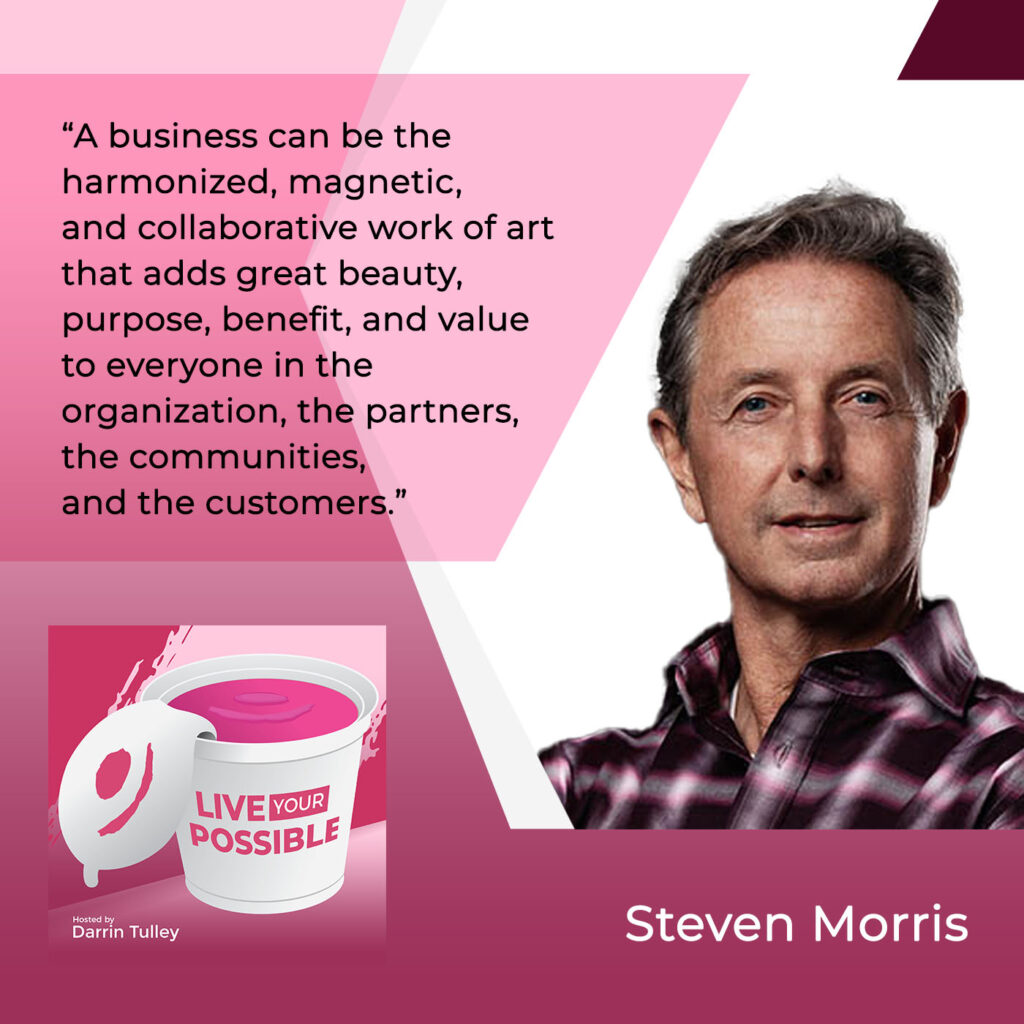
Harmony And Belonging
I love the reference to the artistic view. I know that’s a passion of yours. I want to dive into that as well. You talk about harmony and how that really connects the dots or at least helps to draw people in or pull people in. I’d love to hear a little bit more about that. What do you need to have in place?
The reality is when businesses think about what makes up their internal culture, their culture contains multitudes of personalities, skillset, ages, genders, viewpoints, values, etc. When we think about harmony, the superficial version of that is that everything operates on the same level and everyone does the same thing, but that’s not the true definition of harmony.
Great harmony, and I think about this from musical terms, is when everyone’s singing from the same song sheet but singing it in their own way. It’s taken in a musical score, the way that you create harmony. Let’s say that a chorus is going to sing a G note. You’re going to have tenors, sopranos, and all the different styles and shapes of voices that contribute to that, which, in the end, makes the sound of that note or the sound of whatever that song is much greater than any solo musician could do.
Harmony is the fusion of many different types of voices, styles of voices, perspectives, viewpoints, and attitudes coming together to all collaborate and work on this thing that we call the core of the business. When we understand what that core is, what our core belief is within the business, and what we’re all trying to do, all of a sudden, people can magnetize together around a harmonic way of working that we all drive to the same ideal outcome.
That’s beautiful. Magnetize is another amazing word. How it brings us together and the feeling that we’re all able to share our unique voices and it creates this note that you’re talking about. It’s powerful. A lot of times, we’re telling people to be a certain way, say a certain thing, or sign a certain way, so then we’re all saying the same thing and sign alike. We lose that space of discovery, creation, and creativity.
Magnetizing, magnetics, or being a magnetic organization works equally well and maybe even better when we think about it from a marketing perspective. I believe that really great brands and businesses should never chase customers. If they shouldn’t chase customers, what’s the alternative? The alternative is to attract them.
Really great brands should never chase customers. They should attract them. Share on XWhen an organization creates a brand, a promise, or an offering that is so potent and believable, then all of a sudden, the right people become magnetized to the story, the message, or the offering. The wrong people, the people who are not aligned with who our core customer ought to be, are put off by it. They’re pushed away from the magnetics. We know how magnetics works. Like likes like, but then it also repels at the same time. Great organizations who do what I consider great marketing work from an attraction or magnetics standpoint draw people in through story and through values and making and keeping promises.
In my opinion, a great brand is a valuable promise made and delivered upon. When I can craft that story in such a way that is so resonant with the right people, then all of a sudden, they’re drawn into my organization or into that organization in a way that chasing them around the internet and cyberstalking them can never do. You’ll only be as good as your last marketing program. If you create this magnetic brand, then you’re in the business of attracting. As long as you’re telling stories that resonate with people and you’re making and delivering on your promises that are valuable promises, then you’re going to have a stream of customers.
You’re living out your values. You’re living out your mission truly. You have other people that are joining you. It attracts people who want to work there. They’re excited about working there because they see that connection. I always think about if we can connect with our values and our purpose, we’re aligned with who we are as people. We’re expressing ourselves who we are. To me, isn’t that a lot easier than being somebody else or acting like some other person someone tells me to be? It’s a lot easier in my day. It’s less stressful.
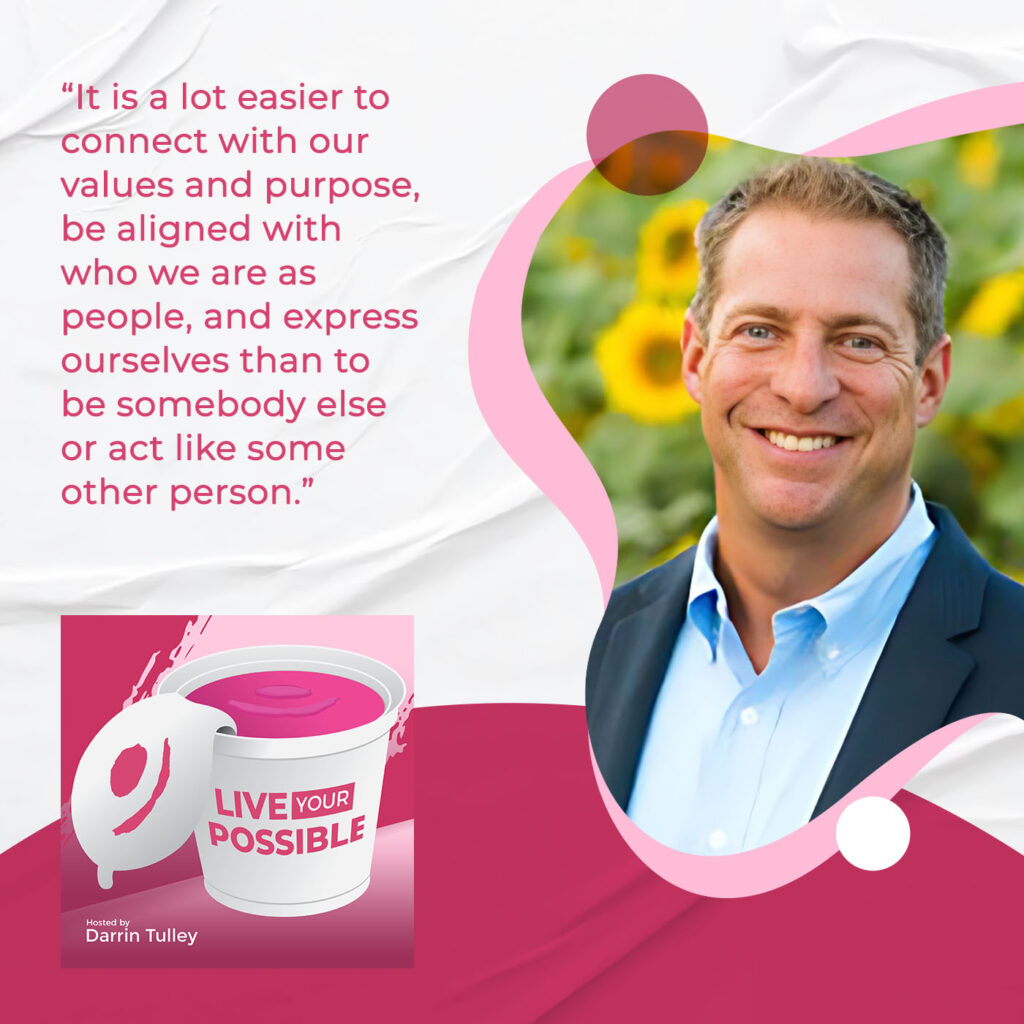
PricewaterhouseCoopers published at the beginning of 2024 a report on the Millennials and what their interest is in terms of employment. One of the data points that they cited was that 80% of Millennials would prefer to work for an organization that aligns with their values, not the other way around. It’s not that the organization’s values align with theirs. It’s that their values align with them.
What are they doing in that scenario? What are they saying about that? They’re saying, “I want an organization where I can show up as my true self, bring my values, and bring the fullest version of myself into fruition into the world of work.” We can see within what we’ve called the Big Quit or the Great Resignation and the new data that’s happening out there that a lot of stats around people leaving organizations because there’s a misalignment in values or a diminishment in trust. That is another whole societal issue that we could talk about. To your point, I find it interesting that this whole value system consideration is a magnetic attraction for talent as well as customers.

It’s astounding, the numbers you’re talking about here. A lot of the companies I work with are starting to understand the importance of values. They’re not up on a wall or a website. We have to live by them. When we live by them, people know the guardrail. We’re all working from a common language. That’s where the magic really happens. We know, “This is where we’re focused. This is what we’re believing in.”
We’re taking the steps to support that, something bigger than ourselves. That’s going to give us a good feeling that we’re contributing to something more meaningful. It’s belonging. That’s a big buzzword, but it’s an important word. I know it’s an important element that you spoke about in your TEDx, the ability to belong. The sooner we can do that, we can move through those phases that you’ve talked about with harmony and being able to contribute in the ways that people are excited about.
Belonging is non-negotiable. I think about it a lot, and I’m sure it’s all in our minds. We’re recording this in the middle of the summer 2024 pre-election season here in the US. I have never seen in my lifetime so much divide in our society and our culture. The element of belonging is not tribalism, which is what I believe we’re seeing from a societal standpoint. It’s a focus on how we’re different. If you’re different from me, then all of a sudden, I feel threatened by that. We then get into this space of othering.
I won’t get too much into the social science behind othering, but we all know how that works. When we see someone else who’s so different from us, we go into a fear-mode perspective on that. All of a sudden, I want to push against that person and I see them not as another American or another community citizen, but I see them as a threat. When someone sees a threat, we go into all kinds of protective modes and things like that. We go back into the science of trauma and polyvagal theory around protecting what’s ours. We will fight for those things, which is primarily what we’re seeing in our society.
Businesses, I believe, can be a reprieve for that. If businesses create a deep sense of belonging in the world, and this is part of creating the conditions so that all these voices and all these wide variety of perspectives can contribute to something that’s greater than them and are welcome to do so based on what their own human individualism is and their skillset is, then you can have the conditions for belonging. You can create that within organizations, and then you can create the opportunity for harmony.
DEI
It’s striking to me that we don’t welcome that as much. There are levels of privilege or some level of power or authority we’re afraid to give up. You know my story. Some of the things I recognized a few years ago is that I was not looking at differences as unique possibilities, strengths, or ways to advance and expand all of our well-being. Once I changed, the world expanded tenfold or maybe a hundredfold at this point with the amount of people that wanted to step in.
Believing in people that these differences are strengths and seeing that we all belong and have the ability to thrive in this equal playing field that’s there. There are a lot of companies in our world that talk about equal playing fields with diversity, equity, inclusion programs. We talked about that a little bit when we met before. The work you’re talking about helps us address what the intention is behind some of those programs. What do you think about that?
If you’re talking about the DEI, DE&I, and DEI&B programs being dubbed, a lot of the data I’m seeing is not particularly positive around them. DEI programs, mostly because of the way they’ve been deployed in various organizations, tended to focus on, “Here’s how we’re different,” and an expression of that. It’s, “Here’s how we’re different,” rather than, “Here’s what we have in common.”
I’m seeing in some of the organizations that I’m working with, talking to, and learning from a little bit of reconfiguration of what a DEI or DEI&B program looks like. I’m really focusing on this attribute of true belonging and holding conversations where any culture contains multitudes. There’s a place at the table for everybody so long as everyone’s contributing to the core of that organization.
You said something earlier that gets to the heart of it, which is the mindset of fear either from a societal standpoint or organizational perspective. We tend to get into a mode when things are chaotic to protect what’s there. Chaos creates uncertainty that tends to create fear. Organizations or business leaders who are the healthiest versions want to create the opposite of that. They want to create a sense of security and sense of belonging within organizations.
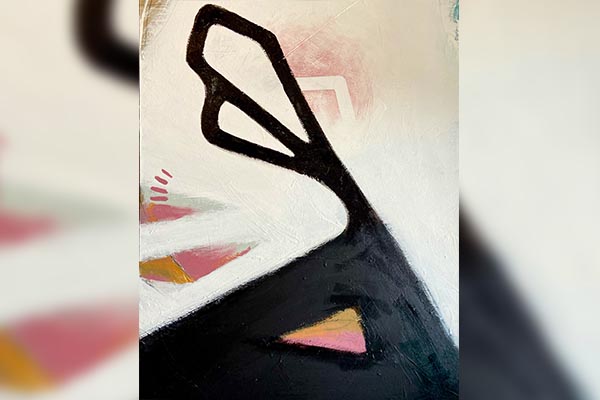
If a company can do that, create the conditions for true belonging, and this takes time and energy within organizations to frankly invest within to harmonize their people together so that they understand what the bonding element looks like and what connects them all, then all of a sudden, they can do pretty extraordinary things. The data’s still out on how to do DEI&B programs properly. There have been some interesting conversations being had around that, but some organizations are very slow to adapt to what’s not working within those realms.
I really appreciate the factor about looking at our commonalities. When I first recognized where I stood in this responsibility, I focused too much on sameness, what was most common, or what I felt most comfortable with. That was still needed. I still needed to find that connection point to find the sameness. What was different is that I was looking for that sameness across all backgrounds and all kinds of people from around the world in a different way. I opened my eyes to what could be common and similar. I wasn’t looking for that because I looked at the distinction of the difference right up front and I didn’t have an open mind to look for that commonality. I had to change that behavior.
When I did, I valued their differences because of how amazing they were as human beings. I looked at them differently. I opened up the door of humanity with a level of transcendence. I love that word. It’s the fact that the work you’re doing is opening this door for us to treat each other with a different level of humanity, and you’re double-clicking on that. Am I in the same place where you are on this?
Story And State
Yeah. Can we play with this a little bit? I love what you explained here. I have a line of curiosity if you’re game to play with this that I want to probe into. There’s a correlation. There’s a connection between what we call story and state. The story is the stories we tell ourselves about ourselves and the people around us. The story defines, in certain ways, our worldview. Even upstream from that, it defines the south view. There’s lots to talk about in there, but I want to keep it simple.
Whatever my state is, which is my biological, physiological, emotional, psychological state, and some could argue a spiritual state, it is connected to the stories that I both tell and believe about my world and myself. The tell and believe are two really important things. That’s all framing for what I’m about to ask. When you went through that process of what I’ve heard is re-examining how you see both yourself and the world, your viewpoint changed. Since I’ve broken down the story state thing, tell me about what you experienced within that. What came first? Did you change your story or did your state change that influenced your story?
My state changed to influence the story. I had a belief and a purpose to bring out the best in people all around me. I believe that. Yet, what I recognized is that I allowed certain people into that circle or into that bubble until I recognized I was limiting who was in that bubble until it burst. I had this awakening several years ago. That’s why this show is called Live Your Possible. It’s part of what it’s called. It’s because there’s this possibility I was shutting out people based on the differences that I didn’t embrace at that time.
When I recognized that everybody has this light inside of them filled with possibility, creativity, love, joy, and all these things that I was not embracing, I started to look at people in a whole different way and believed there was something inside that I want to know what it is. I want to know how we could help bring their full selves to work. That changed my way of seeing the world, how I opened up conversations, and how I would welcome everybody in and look for those differences, strengths, and commonalities too. Those are connective tissues to make sure there’s a foundation of trust and a level of love that’s there. There’s a belief that I am there for everybody.
For me, that has really happened. I had to hear the stories of other people that I wasn’t open to in the past. To your point on that, I started to feel that I was not aware of some of the things that I should have been aware of. I started to see that I was not following my purpose. I wasn’t leaving out my intentions with purpose and conviction. I was inconsistent. That was mortifying to me. That’s what drove me to say, “I need to look at this differently. I need to change my state of mind.” That’s how I got to that place.
I applaud your vulnerability here as an offering to everyone reading because the journey you’ve gone through is the journey of human evolution. All of us have gone through some version of that, I suspect. I have no doubt that there’s a world of people out there, maybe you and I included, who are in the middle of our own journey of continued evolution.
This ability that you’re describing here, and this goes back to our slow-down point, is to pause long enough to consider or reconsider, “What am I doing? In the very finite precious time, this gift of life that I have on this planet, am I living to my fullest potential? Am I living to whatever I define as my own purpose? Am I fully giving myself over to that?”
To your point, “Am I being inconsistent? I do it sometimes. I do it when it’s convenient,” or, “I do it when it works, but then I forget or I get lost. Maybe I get seduced into whatever that is. I get seduced into making more money. I get seduced into the trappings of power, fame, and the things that I think that I want but are not serving my life.” Your journey and what you described there is a beautiful example of someone who has gone through that process of self-examining, “Who am I really? What truly matters to me? To what extent am I willing to commit myself to living that path, staying on that path, and getting rid of all the rest of the noise?”
I appreciate you saying all that and sharing that. That noise was preventing possibilities and was preventing the joy that I had. I was holding back the joy and the opportunities from other people. When we started to really embrace, receive, and see what was possible for everybody, we hired differently. I hired seven people who were more diverse in gender, ethnicity, perspective, and background.
That changed the way I looked at the world. I didn’t need to be an expert. I could say, “I don’t know. I need to invite people’s ideas and thoughts.” That was harmony. That was beautiful. To your point about seeing the beauty in business, that was eye-opening to me. My heart opened up to the point where I could love other human beings in the workplace without it being inappropriate in the sense of what people think about love in the workplace. I know you look at that as a possibility too. Where do you think love belongs in the workplace?
Love In Business
It belongs at the core. It belongs everywhere. Before someone paints me as a starry-eyed optimist or a starry-eyed dreamer, I’m always reminded of a story. There was a debrief that I had with a CEO who I was helping through a tough time within his organization. This is during the pandemic. The story that he told me was, “For all the difficulty that I’ve been through in running this business, anyone who’s in any leadership position recognizes that it is not a path that’s for the weak at heart. You will be tested through your character at your core.”
He said, “For all the difficulty that I’ve been through in this business, I bring as much love into it as I do to my family. These are my work family. I wouldn’t change a thing because they have given me so much love in return.” This man was in his mid-70s about to sell the business and retire. He said that has been the gift of a lifetime right next to his family. He has been married for 55 years or something like that and has 6 kids. He talked about them glowingly. In the same breath thereafter, he talked about his love for his business and the people within it.
That’s a great place to be.
It belongs there. Anything that is important to us in this lifetime, we are going to do with some version of love. I believe it belongs in every portion of the business, especially at the core, and especially love from one another. Even to your message within your show, Live Your Possible, the world of business lives in the world of, “This might not work.” Right next to that is the world of possibilities.
Since we live in the world of, “This might not work,” we’re always trying to conjure up what can be our next best thing within the business. The way that that is birthed is through a point of passion. It’s like, “I believe that I can change the world in some way, shape, or form. I don’t know how we’re going to do it, but we’re going to do it together.” That’s making the possible real. It’s only done through, or best done through the leverage of love.
That is the human language as we talk about this and how we connect. It doesn’t matter where we’re from or what we look like. In this society, especially in the US, it’s hard. Yet, if we could break some of these walls down one person at a time and get curious about asking questions, “What brings joy to other people? What makes you tick? What gets you excited? What brings passion out of you? What lights you up?” These are all these questions I’ve been trying to draw out of you a little bit, too and your passion. You talked about artistry. I’m curious about how that ties into all this work.
Artistry
It ties in indirectly. The world of the artist and the world of the entrepreneur are quite similar. As a painter, I am constantly experimenting with, “What am I painting? What am I trying to convey from a message or story standpoint? How am I trying to move people? How am I trying to make the world more beautiful?” It’s similar to the world of business in that it’s filled with risk-taking. It’s filled with taking chances to destroy or move on from the things I thought I knew of the past and stepping into uncharted territory. It’s also about an act of human expression that believes that if I’m running a business or I’m creating a painting, I believe that I can make the world better or somebody’s life better in some way, shape, or form either through this painting or through this business.
There’s also this beautiful act of, in the world of artistry, what I consider professional noticing. A lot of the things that an artist does is pull together things that other people don’t notice or don’t notice consciously. Business leaders do that, too. When we think about how the iPhone came together, all Apple did was take a phone, the iPad, the internet, a keyboard, and all those kinds of things and put it into one little container. It pulled together these things that were never pulled together before. It’s radical noticing what’s happening and then unearthing that in such a way that we present it to a set of people out there and say, “I made this for you. You might benefit from it.”
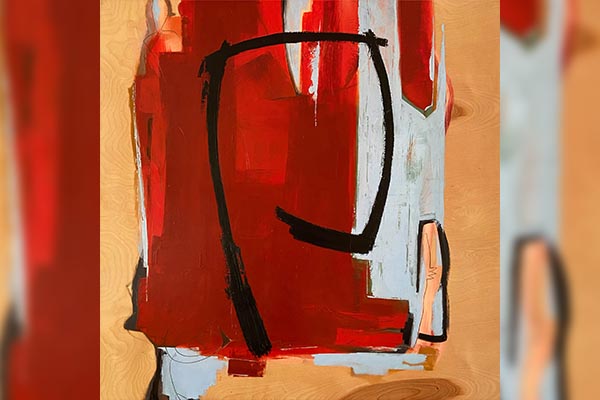
I’ve seen a quote from Steve Jobs similar to how things come together when he notices things. I don’t think he said the word notice, but it was how he was creative. He said he took what was right in front of him and brought it to reality or brought it to the world in a different way. That’s so important. Sometimes, we overlook what’s right in front of us because we think everybody else sees it. Sometimes, what we have right in front of us is somebody else’s profound or maybe even our own.
This goes back to the earlier point. We’ve hit on it three times. One has to slow down long enough to recognize the things that are directly in front of us. You know the way a society works. We’re 100 miles an hour all the time. We don’t even take good vacations, let alone decompress the stress that we have. We certainly don’t take the time to notice the things that are truly there within our lives, our businesses, and our work. There’s this attribute of going, at least at times, a little bit or maybe a lot slower so that we can cover off on the things that we’re either bypassing or not recognizing that are right there that are fertile ground for us to care for this garden that we’re creating within our business.
A gardener that is too busy is not going to weed the garden. It’s going to be a mess. Nothing wrong with nature, but it’s going to turn into more like a meadow than a garden that has deep cultivation to it. While I love nature and nature is a garden in its own way, it’s also a curated garden, a cared-for garden, and a nurtured garden. The gardener has to slow down long enough to recognize where the threats are, where the weeds are, how healthy the soil is, and all the things that that garden needs in order to flourish.
A beautiful picture again. I love the pause reference. I appreciate you bringing it back up. Sometimes, we need to build that in our day a little bit, too. When I talk to people about starting a gratitude journal, it’s not just about writing it down. It’s the fact that you’re putting it on top of your mind, and then it pops up during your day so you can appreciate it. You get excited about it.
It’s the same thing with company values. There’s a reason. We’re connecting to something that will show up during the day. We’re like, “That’s right. This is the guardrail. This is what we’re working with together. This is something we’re passionate about.” With my logo for the show, the one-eye smile is something I connect with throughout the day. I see it all over the place. It reminds me to slow down and appreciate the joy and the beauty of the world and everybody in it. That’s my reminder all the time. I see it all the time. It’s great. It slows me out enough to say, “I’m here. This is awesome.” I’m able to do something about it and appreciate what’s in front of us.
I’d love to know from your standpoint how you got here. I love your stories. You have all these great insights and articles that you present. Your TEDx was fabulous. I’m looking forward to your next book. You’re insightful. Your stories are wonderful and you put it into action. You give tips on how to put these things into action. How did you get here? Did you have light-up moments? Did you have struggles? Did you have to overcome? How did you become you?
From early childhood, I was both fascinated by how the world works and what makes me tick. When I went to undergraduate school, I studied both painting and psychology at the same time. I worked with a painting master who was a protege of the famous artist of the New York School, Mark Rothko. Within that, I learned the craft and discipline of artwork, painting, and all the things that you need to develop.
At the same time, I was parallel-tracking into the world of psychology, what drives us, what makes us, and what our motivations are, especially in union psychology. That has a lot to do with an active imagination and what we would call union-depth work, which is not just dealing with the conscious mind. What about the unconscious or subconscious? How does that play a role in our lives? I’ve continued to study that and work on those things. If you think about it like a two-rail system of a train track, if you will, they have both informed who I’ve become and who I’m constantly becoming. Both have to do with the attributes of creativity, humanity, and us at our best or us trying to idealize who we are at our best.
Before my wife and I moved to San Diego, where we live back in 1994, we spent our first anniversary in a Ryder truck towing a 1971 VW bus across the country like our own micro Conestoga wagon kind of thing to a city in San Diego where we knew that we wanted to live from a lifestyle standpoint, but we didn’t know anybody here.
I was working with agencies on the East Coast as a young creative director. I thought I would get a job out here. The reality is the city’s size was not close to the East Coast work that I was doing. I had some freelance work out of some of the clients that I was working with, moonlighting, so I hung a shingle and started working.
Fast forward, in 23 years of running that business, 23 years of building that business, 23 years of learning how to do business, how to build a culture, how to work with a team, how to do all the things that are in the craft, I, all of a sudden, understood what makes a very good business, at least from my perspective. I realized that because it was a marketing and branding agency, I was in the business of schlepping stuff that sometimes I wasn’t thrilled about. I won’t get into some of the horror stories around that.
I love that work. It taught me a lot. When I sold the business in 2017, I recognized that it wasn’t my life’s work. It was part of why I wanted to package it up and step out so I could go off and do the consulting work that I do, which is high-touch consulting. I am helping organizations realize their own potential because I’m constantly striving for that. Since I have training in both the psychological worlds, I have a lot of experience in brand, marketing, culture, and certainly business strategy. I fuse those things together and constantly keep a close eye on the world to notice what’s going on.
All I do through my writing, and there’s nothing magical about it, is deep noticing. I’ve noticed this and I’ll tell a story about this. All of my writing has to do with acts of generosity and empathy. It’s generous because I’m very open about sharing how I do what I do. I’m like, “Here’s how this could work for you potentially if you’re interested in the same things.” It’s empathy in the fact that I get it. It’s not easy. What we do in this world of business is not easy. It’s really complex, especially if we’re going at it the deep human way. I’m here to help. Empathy and service is something that’s really important to me.
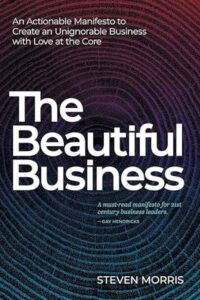
You’re putting yourself out there generously. Your heart’s out there. I appreciate it. Your insights, your articles, and what you share are open and super helpful. Deep noticing is a really important term for us to think about and be reflective on. I feel like we could have a few other conversations here based on a couple of areas. We could probably have full episodes.
Before we close up here, I know you have some time with your son and I don’t want to cut into that because it’s so important. There’s one last thing. I’ll certainly let people know how to get a hold of you, reach out to you, and connect with you, as you’ve noted on your website. Are there any last few tips you could help people live their possible?
I would say to embrace the idea that possible is possible. Some people get really successful in their careers and they get stuck at a place where we might call a plateau. They get comfortable in their world. Be notorious. Tear down the things you think and keep challenging the things you think you know.
Embrace the idea that possible is possible. Share on XWhen you dismantle your own assumptions or even your own belief systems about the way your world works, and your story is a perfect example of this, all of a sudden, doors open up of worlds of possibility that you didn’t even recognize were there for you before. By challenging or rethinking your own life, your own work, your own assumptions, your own beliefs, your own connections, your own friends, your own colleagues, and even the work that you do, and re-examining that on a pretty consistent basis, you can discover all kinds of things not just about yourself, which is important, but also about the world around you.
Thank you for all of your insights, how you shared your stories and the depth you went into in this episode. I appreciate you. I admire the work you’re doing. Thanks for joining the show.
It’s been my absolute pleasure. If there’s other stuff we want to talk about, invite me back on. I’m willing to go anywhere. I have one parting question for you. You mentioned the one-eye smile. Tell me about that.
Becoming Steven Morris
How much time do we have?
As much as you want.
Quickly, this was a moment that I had after I had my awakening. I was accepting and embracing the world of differences in the beauty that was out there. I was letting my guard down, allowing myself to be a little bit silly. I had this moment with my daughter where she finished her homework and wanted a sweet treat and I was pushing back. I was pretending to do work on my phone and not being present either way.
When I put the phone down and we agreed on the dessert she could have, she agreed to have Italian ice. This is a picture of a lid with a watermelon Italian ice. (note: Live Your Possible Show icon). Once we put the lid down, she started to eat the Italian ice and I went back to my phone. When she was done, she was lit up. She was super excited. Out of the quarter of my eye, I saw at the back of the watermelon Italian ice lid this one-eyed smile and it was upside down. I lit up. She was lit up. Her mouth and eyes were wide open. We let our guards down to see the beauty in the world that was staring right at us.
It was upside down. I turned it around and showed her, but then I recognized I was upside down. I needed to see the world differently. I needed to notice what was right in front of me. This one-eyed smile was always there, waiting for me to see it. I see it wherever I go. I went on a bike ride and found six of these in different shapes and formations on clouds, trees, light coming in on the roadway, and twigs. It lit me up the whole way. It’s one of those things I’m welcoming to the world in a whole different manner because I’m willing to look for it and I’m willing to embrace and accept what lights me up.
That’s deep noticing right there. Well done.
Thank you so much. Have a great time with your son. It’s been a pleasure.
Thank you. I appreciate it.
Important Links
- Steven Morris
- The Beautiful Business
- Matter Co – Insights
- Matter Co – The Beautiful Business
- Steven Morris – LinkedIn
- The Beautiful Business | Steven Morris | TEDxCWRU
About Steven Morris
 Steven Morris is an ever-curious life-seeker, brand and culture-building expert, and author of “The Beautiful Business.” With nearly 30 years of entrepreneurial experience, he has served as a trusted advisor to over 3,500 business leaders and evolved more than 275 brands and cultures, including Google, Habitat for Humanity, Samsung, and Disney.
Steven Morris is an ever-curious life-seeker, brand and culture-building expert, and author of “The Beautiful Business.” With nearly 30 years of entrepreneurial experience, he has served as a trusted advisor to over 3,500 business leaders and evolved more than 275 brands and cultures, including Google, Habitat for Humanity, Samsung, and Disney.